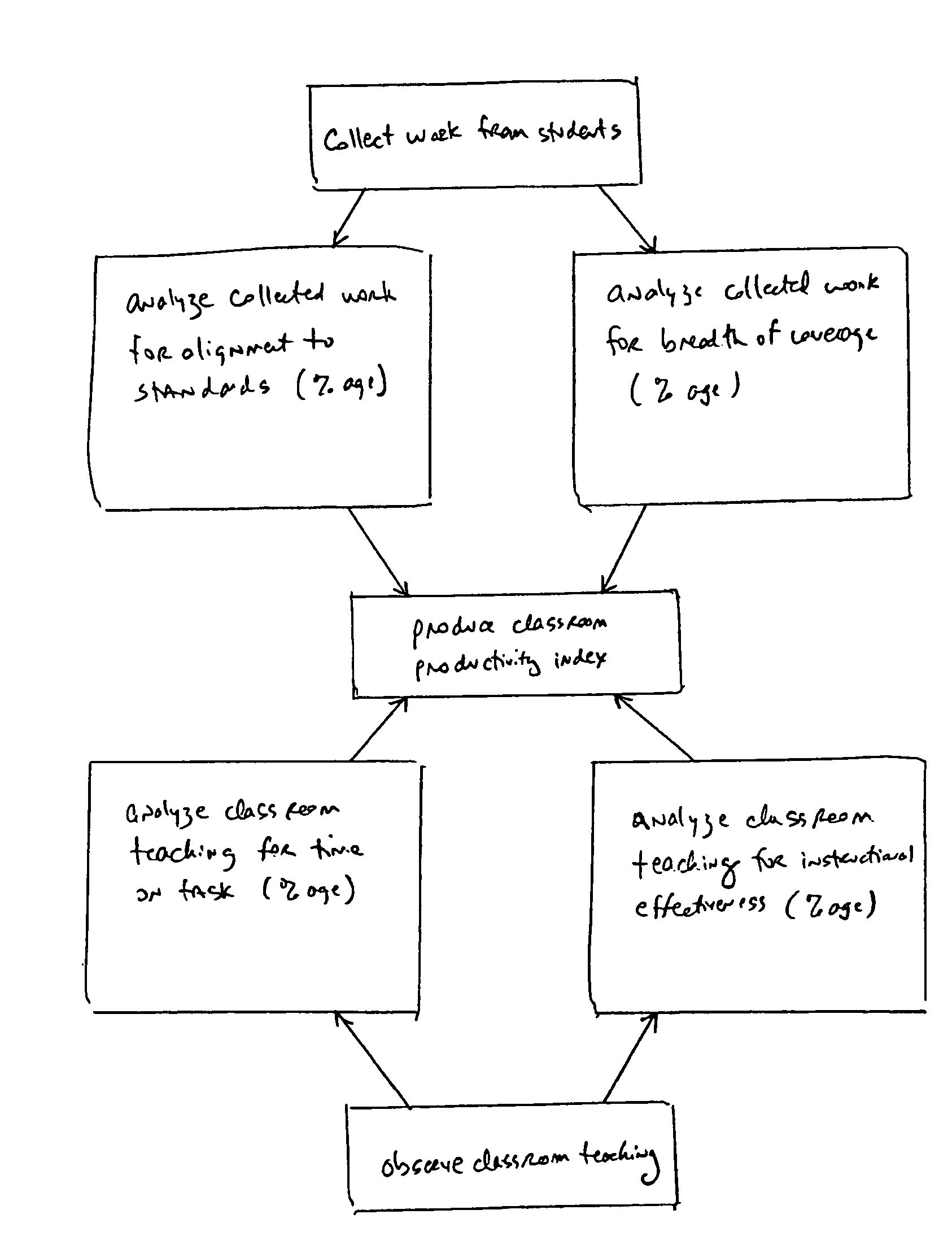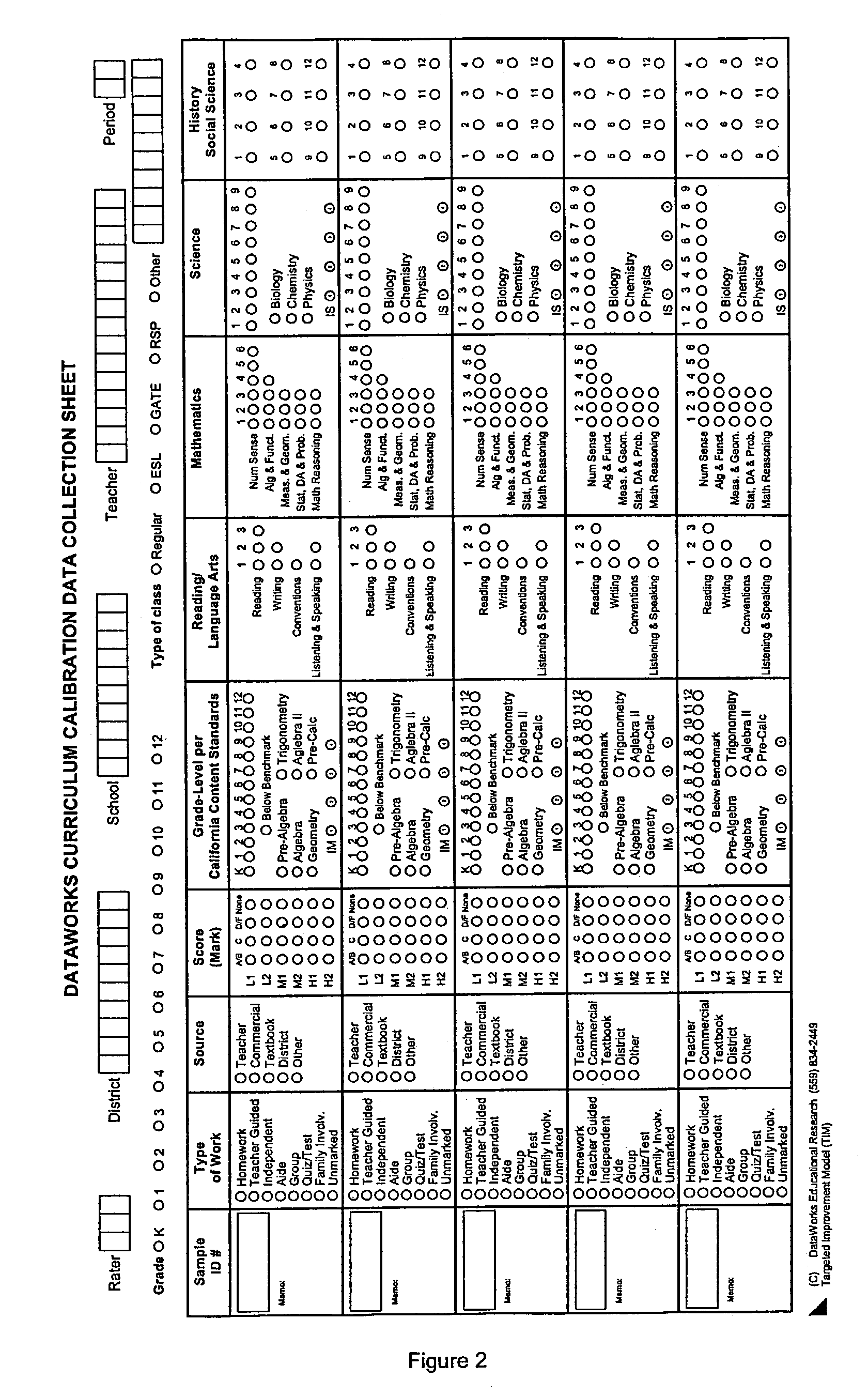Methods for generating classroom productivity index
a productivity index and classroom technology, applied in the field of classroom productivity index, can solve the problems of not providing direct analysis of teaching effectiveness, inappropriate incentives and disincentives given out to schools based on student performance alone, and patents that do not attempt to measure nor quantify. achieve the effect of improving their own instructional effectiveness and higher student test scores
- Summary
- Abstract
- Description
- Claims
- Application Information
AI Technical Summary
Benefits of technology
Problems solved by technology
Method used
Image
Examples
Embodiment Construction
[0035]The Classroom Productivity Index of the present invention is the product of four factors which come from two basic data sources, Curriculum Calibration and the School Wide Instructional Practices Survey (SWIPS). The Index is then used as a measure of the effectiveness of the school's educational program. The Index is computed as a percentage between 0 (totally ineffective classroom teaching) and 100% (all teachers teaching effectively). An Index of 100% would mean that all four components are optimized: All assignments are on grade level matching standards, assignments cover all content areas as tested, all classtime is spent in instruction, and all teachers are using effective Explicit Direct Instruction. Typical Classroom Productivity Index values for schools have been found to range from 3% to about 17% showing wide potential for improved teaching and improved student learning.
[0036]The two main factors calculated as a result of Curriculum Calibration are Alignment to Stand...
PUM
 Login to View More
Login to View More Abstract
Description
Claims
Application Information
 Login to View More
Login to View More - R&D
- Intellectual Property
- Life Sciences
- Materials
- Tech Scout
- Unparalleled Data Quality
- Higher Quality Content
- 60% Fewer Hallucinations
Browse by: Latest US Patents, China's latest patents, Technical Efficacy Thesaurus, Application Domain, Technology Topic, Popular Technical Reports.
© 2025 PatSnap. All rights reserved.Legal|Privacy policy|Modern Slavery Act Transparency Statement|Sitemap|About US| Contact US: help@patsnap.com



